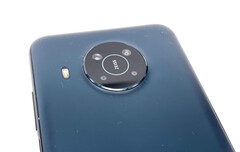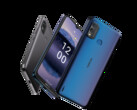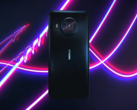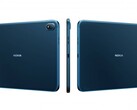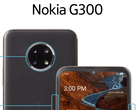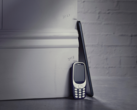There is no charger in the Nokia X10's box. That sounds like a cost-saving measure at first.
And it's certainly true: The manufacturer HMD Global saves money, not only on the manufacture of the charger, but the package can also be reduced in size, which lowers transportation costs.
Still, is it legitimate to present this as an action for environmental protection? At least Nokia or HMD Global is smarter than Apple and gains more credibility by donating the profits generated from the additional charger sales. So, at least Nokia doesn't earn more money by removing the chargers from the package. Needless to say, though, they're saving money at the same time, as mentioned earlier.
It's impossible to tell just how much space has been saved for transport, since Nokia does indeed order a number of chargers to be available for purchase. According to the manufacturer, the demand for chargers for the Nokia X20 and X10 is low, though. This should result in Nokia requiring a slightly lower transportation capacity for its smartphones, which would directly benefit the environment by reducing shipping traffic.
Next aspect: Nokia includes a compostable case in the package of the X10, which should provide the smartphone with better protection against damage while eliminating at the same time the use of environmentally harmful plastic for the case. That's good, but it's questionable whether the case will really be composted in the end and not burned in a cogeneration plant instead, since most garbage collection companies only allow items that decompose very quickly to be disposed of with organic waste.
The fact that Nokia offers longer warranty periods and more updates for its devices should clearly extend the devices' lifespan. At the very least, the user has the chance to have a device with up-to-date software for a longer time and to extend their hardware upgrade cycle.
The manufacturer offers an environmental profile of its devices on the Internet, and the Nokia X10 is also included here. In it, you can read that over 90% of the materials used can be recycled. However, it also states that this can happen in the form of material or energy, meaning that combustion is also regarded as recycling.
The packaging already consists of recycled materials to almost 85%, and 100% of it can be recycled again. The coating of the packaging is water-based.
Overall, we can say that HMD Global certainly has some good approaches towards making its products a bit less harmful to the environment. The extended warranty and the prolonged duration of updates particularly stand out here.
At the same time, a Nokia phone isn't a Fairphone (yet): The Nokia X10 isn't modular, and it doesn't hold suppliers to such high ethical standards as the world's possibly fairest phone at the moment does. But on the other hand, it's also significantly cheaper and consequently less of a niche product. This creates the opportunity to make higher environmental standards a mainstream sales criterion.
And Nokia is just getting started; the current X series devices are the first generation with the sustainability promise. So, future devices will show how serious the Finnish are about their environmental concerns.
If you want to know more about how well the Nokia X10 performs in everyday use, we recommend our in-depth review of the Nokia phone.


 Deutsch
Deutsch English
English Español
Español Français
Français Italiano
Italiano Nederlands
Nederlands Polski
Polski Português
Português Русский
Русский Türkçe
Türkçe Svenska
Svenska Chinese
Chinese Magyar
Magyar